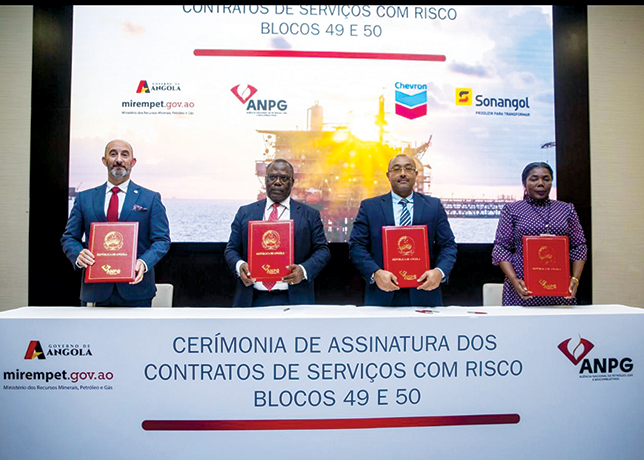
 The 2,000-tonne crude column at the Dangote Refinery (now built) is the largest ever fabricated
The 2,000-tonne crude column at the Dangote Refinery (now built) is the largest ever fabricated
Despite the African upstream oil and gas sector seeing a 75 per cent drop in deal value to $3 billion in 2023, companies are keen to expand portfolios and explore new opportunities
ALTHOUGH investments in Africa’s upstream oil and gas deals dropped considerably in 2023, regional public and private companies still continued to explore expansion opportunities in the continent.
Africa's upstream saw only $3 billion worth of investments in 2023, compared to over $10 billion in 2023 – a nearly 75 per cent decrease – with acquisitions driven primarily by regionally focused companies, according to the African Energy and Economy: 2023 Review and 2024 Outlook report by S&P Global.
This momentum is expected to increase this year, as private companies lead mergers and acquisitons, albeit focusing on established fields to maximise recovery from operations.
Global integrated oil companies (GIOCs) also increasing investmen in the upstream sector. These companies are not only investing heavily in new projects but also redesigning these projects to incorporate renewables and carbon capture technologies to align with global decarbonisation pressures.
Projects such as Eni’s Baleine field in Côte d’Ivoire and TotalEnergies’ Graff and Venus fields in Namibia are prime examples.
Private investment vehicles owned by high-net-worth individuals, like Famfa Oil and Heirs Holdings, are actively acquiring assets and investing in onshore and shallow-water resources.
Financial institutions like the African Export-Import Bank and the soon-to-be-launched African Energy Bank are increasingly focusing on financing upstream projects, aiming to reduce reliance on international funding sources. This shift is crucial as it unlocks Africa’s significant hydrocarbon potential more rapidly.
Meanwhile, national oil companies (NOCs) from Asia and the Middle East are becoming more assertive in African upstream projects. Notable investments include Uganda’s Kingfisher project and projects in the Orange Sub-Basin in Namibia and South Africa. These developments could stimulate more M&A activity by attracting substantial funding to new projects.
On the other hand, Africa’s downstream remains vibrant despite challenges. The continent’s refining capacity continues to be a focal point, with ongoing investments in upgrading existing refineries and constructing new ones. These efforts aim to meet growing domestic demand and reduce dependence on imported refined products.
Several countries, including Nigeria, Angola, and Egypt, are investing heavily in expanding their refining capacities.
For instance, the Dangote Refinery in Nigeria, once operational, is expected to be one of the world’s largest, significantly boosting the country’s refining capabilities. Similarly, Angola’s new refineries are set to reduce the nation’s reliance on imports.
While there are significant opportunities in the downstream sector, challenges such as regulatory hurdles, financing issues, and operational inefficiencies persist.
• Future outlook for African energy: The ongoing shift in European energy security demands, largely due to the Russia-Ukraine conflict, has pushed African gas resources higher on the strategic agenda for consumer governments and upstream companies. This shift presents new economic opportunities for African nations.
The pressure on GIOCs to decarbonise is intensifying, prompting a redesign of major African greenfield projects to include renewable energy and carbon capture technologies. This trend is driven by both international agreements and local regulatory pressures.
Countries like Uganda and South Africa are making regulatory adjustments to facilitate upstream development while addressing environmental concerns.
With Western banks reducing their involvement due to environmental policies, new sources of financing are emerging.
Asian banks, export credit agencies, and domestic initiatives like the African Energy Bank are filling the gap. This shift in the financing landscape is expected to accelerate the development of Africa’s hydrocarbon resources.
• African power and renewables: Renewable energy is becoming an increasingly important part of Africa’s energy mix. Significant investments are being made in solar, wind, and hydropower projects. For example, South Africa and Morocco are leading the way with substantial solar and wind energy projects, aiming to reduce reliance on fossil fuels and increase energy security.
Batteries and hydrogen are emerging as key technologies for energy storage and distribution.
These innovations are crucial for integrating renewable energy into the grid and ensuring a stable power supply.
Countries like Kenya and Ghana are exploring the potential of these technologies to enhance their energy infrastructure.
By Abdulaziz Khattak


















































































